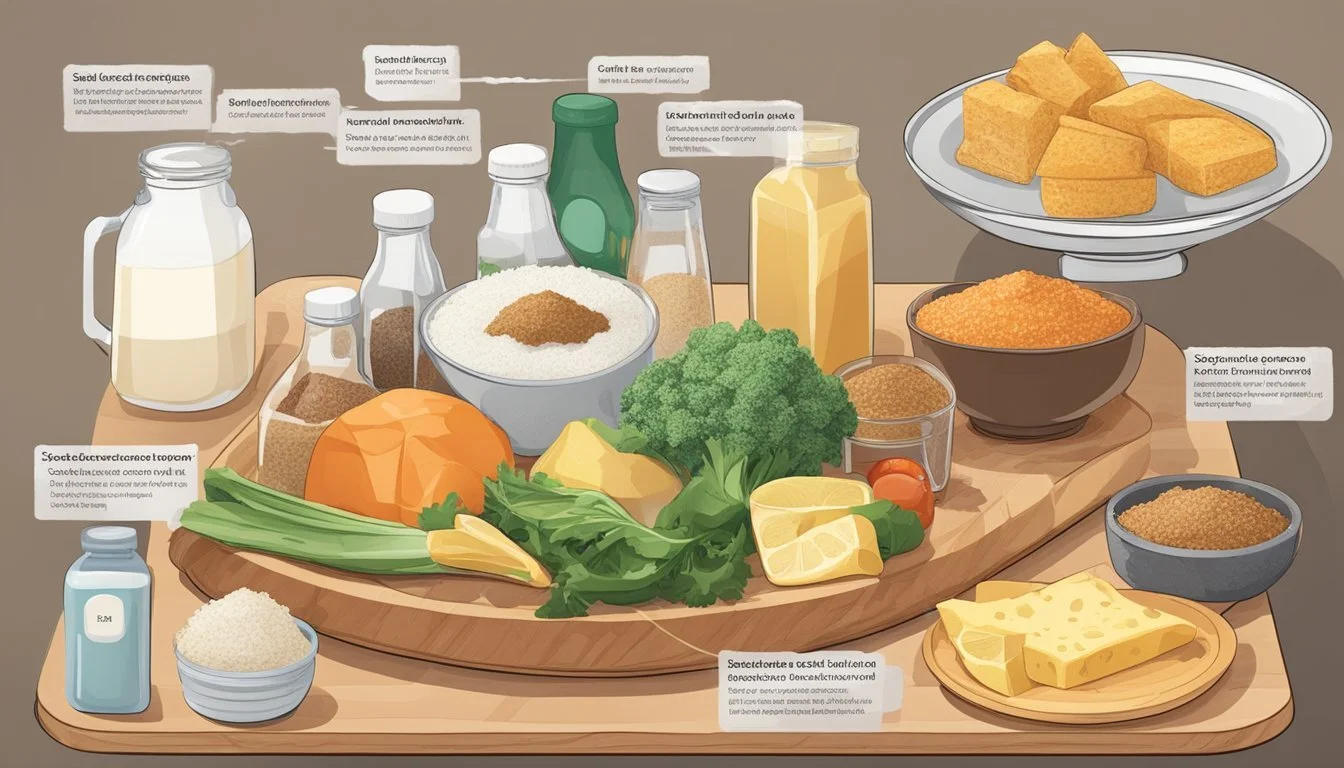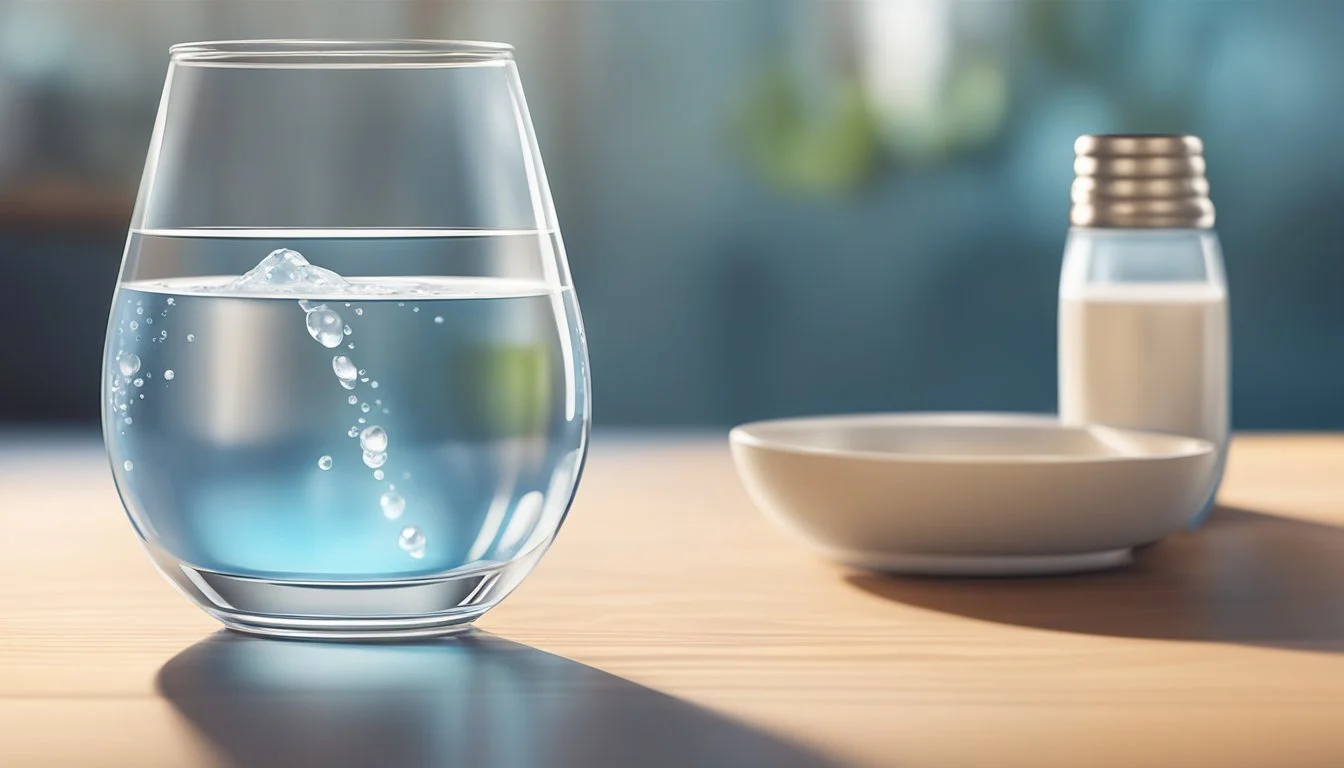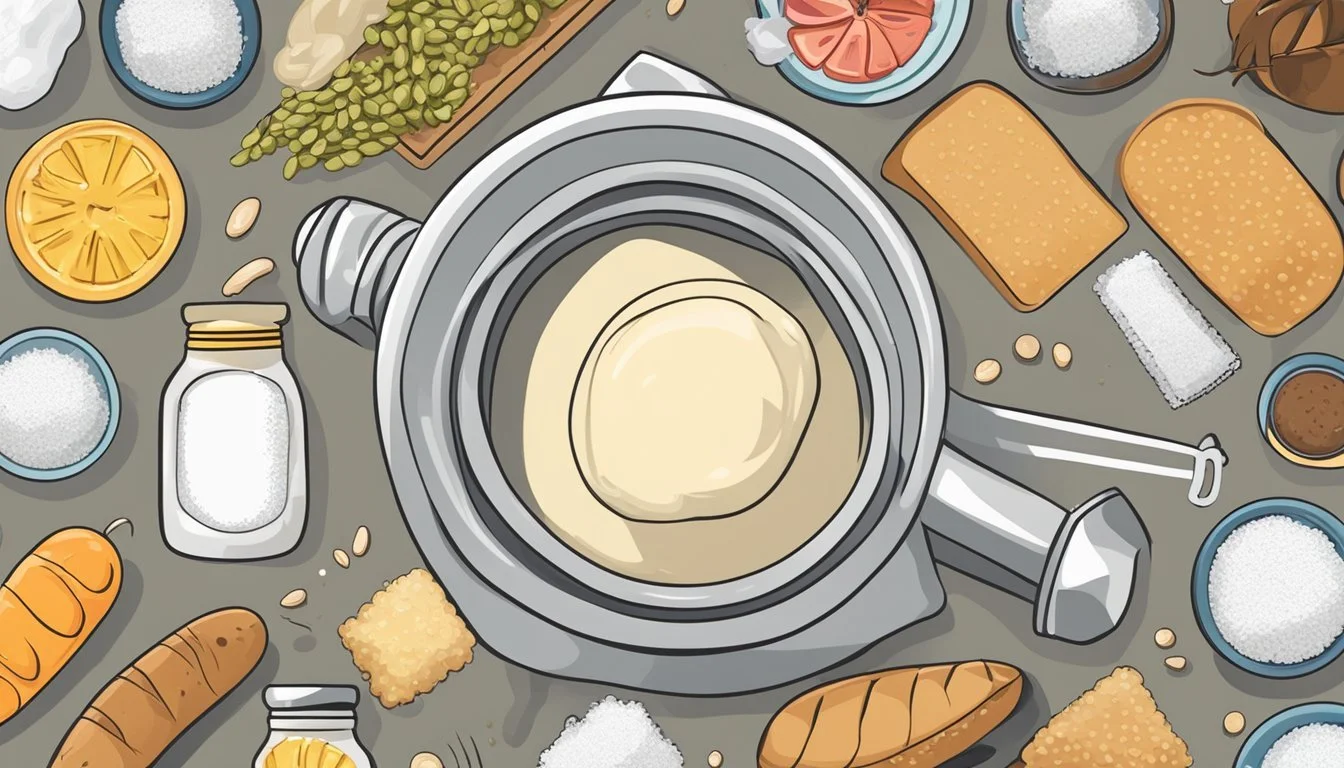How Much Salt Should You Limit Yourself to Each Day?
Understanding Daily Intake Recommendations
Sodium, a mineral found abundantly in table salt (sodium chloride), is essential for various bodily functions, including muscle contractions and nerve transmissions. However, the amount of sodium that individuals consume can significantly impact their health. High sodium intake is linked to increased blood pressure, which is a risk factor for heart disease and stroke. Public health organizations have scrutinized the typical modern diet for its excessive sodium levels, mainly due to processed and prepared foods.
Health guidelines on sodium intake suggest that adults should limit their consumption to no more than 2,300 milligrams per day, equivalent to about one teaspoon of table salt. Despite this guideline, it's reported that many people exceed this amount, and it's common for the average intake in the United States to hover around 3,500 milligrams daily. Considering these factors, some health experts and organizations, including the American Heart Association, advocate for a more stringent limit of 1,500 milligrams per day, especially for those who are at greater risk of cardiovascular diseases.
Maintaining a balance is crucial as the body requires a certain amount of sodium to function correctly, while too much can be detrimental. Very low sodium intake, often defined as less than 500 milligrams per day, is rarely a concern for the general population, given the prevalence of sodium in numerous foods. It's essential for individuals to be aware of their sodium intake and strive for an amount that aligns with current health recommendations, taking into consideration their own dietary needs and any medical advice provided by healthcare professionals.
Understanding Sodium and Its Role in Health
Sodium is a crucial mineral that plays a vital role in maintaining the balance of fluids in the body and is necessary for the proper functioning of muscles and nerves.
The Functions of Sodium in the Body
Sodium, as an essential mineral, facilitates a range of physiological processes. It is crucial for the regulation of blood pressure and fluid balance, helping to control the amount of fluid in and around cells. It is also key for the operation of nerve impulses and muscle contractions. Consistent levels of sodium are maintained by the kidneys, which filter excess sodium into the urine.
The body's sodium balance is tightly controlled and has a direct impact on heart health. While sodium is critical to health, excessive amounts can lead to an increase in blood pressure, a risk factor for heart disease.
Sodium vs. Salt: Definitions and Differences
Sodium is a mineral that, along with chloride, forms sodium chloride, commonly known as table salt. Sodium by itself is not typically found in the diet but is a component of salt.
Sodium Chloride (Salt): Approximately 40% sodium and 60% chloride by weight.
Sources: While sodium can be naturally occurring in foods, the majority of dietary sodium comes from table salt added during processing or cooking.
Understanding the difference between sodium and salt is important for interpreting nutritional information and for maintaining a diet that supports heart and kidney health.
Daily Sodium Intake Recommendations
Managing sodium intake is crucial for maintaining heart health and preventing conditions such as high blood pressure and heart disease. This section outlines the current guidelines for sodium consumption and delves into specific recommendations for diverse populations.
General Guidelines for Sodium Consumption
The American Heart Association (AHA) recommends that adults consume no more than 2,300 milligrams (mg) of sodium per day, which is roughly equivalent to one teaspoon of table salt. However, they encourage moving toward a lower limit of 1,500 mg per day to further reduce the risk of heart disease and stroke. In comparison, the World Health Organization (WHO) suggests a limit of 2,000 mg of sodium per day to maintain a healthy blood pressure level.
Most Americans exceed these recommendations, consuming an average of more than 3,400 mg daily, mainly through processed and prepared foods.
Special Considerations for Different Populations
Certain individuals may require more stringent sodium restrictions due to their increased risk for heart-related conditions:
People with high blood pressure, chronic kidney disease, or diabetes: A more substantial reduction in sodium intake can help manage these conditions.
Older adults: As they are at a higher risk for hypertension and heart failure, a lower sodium limit is beneficial.
Those with congestive heart failure: Limiting sodium can help alleviate symptoms and prevent complications.
It is advised that these groups aim for the lower end of the AHA’s recommendation, closer to 1,500 mg per day. Individuals should consult with a registered dietitian to understand their unique dietary needs.
Sources of Sodium in Diet
Sodium is an essential nutrient found in various foods, but excessive intake, largely due to processed and restaurant foods, can pose health risks. Reducing sodium consumption begins with understanding its primary sources in the diet.
Processed Foods and Sodium Content
The majority of sodium intake often comes from processed foods. These include bread, which may not taste salty but can contain a significant amount of sodium. Canned vegetables and soups often have added sodium used as a preservative. Cheeses, especially processed varieties, are also notable sources. Similarly, snacks like chips, cold cuts, and cured meats (What wine goes well with cured meats?) are high in sodium, as are frozen meals and ready-to-eat products like pizza, burritos, and tacos.
Common High-Sodium Foods to Monitor
It is important to monitor the intake of commonly consumed high-sodium foods. These include:
Pizza: Combines several high-sodium ingredients such as cheese, cured meats, and tomato sauce.
Bread and rolls: Can contribute unexpectedly large amounts of sodium to the diet.
Poultry: Especially when injected with salt-containing solutions or seasoned.
Soups: Often high in sodium, especially canned or restaurant varieties.
Sauces and dressings: Add flavor but also a significant amount of sodium.
Understanding Food Labels and Terms
Learning to read nutrition facts labels is crucial for managing sodium intake. Terms to look for include:
Sodium-free or salt-free: Less than 5 mg of sodium per serving.
Very low sodium: 35 mg of sodium or less per serving.
Low sodium: 140 mg of sodium or less per serving.
Reduced sodium: Usually has 25% less sodium than the original product.
Light in sodium or light salt: These products have either been processed to reduce the sodium content by at least 50% or they have less sodium than the full-salt version.
Checking the serving size and the number of servings per container can help consumers understand how much sodium they are consuming per serving, aiding in more informed dietary choices.
Impact of Excess Sodium on Health
Excessive sodium intake can lead to significant health risks and worsen chronic health conditions. The following subsections detail how high sodium intake affects the body and its impact on long-term health.
Risks Associated with High Sodium Intake
High sodium intake is closely linked to increased blood pressure, which can place excess strain on the arteries. This additional pressure can cause the arteries to stiffen over time, leading to hypertension, a risk factor for both heart attack and stroke. Elevated blood pressure due to high sodium consumption can also contribute to heart failure.
Blood Pressure: The body retains extra water to wash the sodium away, which raises blood pressure.
Heart Health: Chronic high blood pressure can increase the risk of heart disease.
Stroke Risk: High blood pressure is a leading cause of stroke due to the damage caused to blood vessels in the brain.
Sodium's Relation to Chronic Health Conditions
Excess sodium has a documented relation to several chronic health conditions beyond its immediate effects on blood pressure and heart health. Overconsumption of sodium can exacerbate kidney disease, as the kidneys must work harder to filter the excess sodium, which can eventually lead to chronic kidney disease. People with diabetes must also closely monitor their sodium intake since high sodium can complicate the management of their blood sugar levels.
Kidney Health: Sodium can interfere with the natural balance of minerals, leading to kidney function decline.
Chronic Conditions: Persistent high sodium intake can contribute to the development or worsening of chronic kidney disease and type 2 diabetes.
By maintaining sodium intake within the recommended limits — no more than 2,300 mg per day and ideally less than 1,500 mg for most adults — individuals can significantly reduce the risk of these health issues.
Reducing Dietary Sodium
Reducing dietary sodium is essential for maintaining a healthy blood pressure and reducing the risk of heart disease. One must be mindful of the sodium content in foods and consider various strategies to lower intake without sacrificing flavor.
Strategies for Lowering Sodium Intake
Individuals can significantly reduce sodium in their diet by:
Reading Labels: Opt for products labeled as low sodium, reduced sodium, or no salt added.
Cooking at Home: This allows for complete control over the amount of sodium added to food.
Choosing Fresh Foods: Fresh fruits and vegetables are naturally low in sodium, unlike many processed items.
Rinsing Canned Goods: Draining and rinsing canned beans and vegetables can decrease sodium content by up to 40%.
Limiting Condiments: Sauces and dressings often contain high levels of sodium. Use these sparingly or seek low-sodium versions.
Alternatives and Substitutes to Sodium
When cooking or seasoning food, one has numerous sodium-free or low-sodium alternatives:
Herbs and Spices: Flavorful additions like garlic, cilantro, basil, or rosemary add zest without sodium.
Citrus Juice and Vinegar: A squeeze of lemon or a dash of vinegar can brighten dishes in place of salt.
Salt Substitutes: Potassium chloride can be used as a salt substitute, but should be used judiciously, especially for individuals with kidney problems or those on potassium-restricted diets.
Monosodium Glutamate (MSG): While MSG can enhance flavor with less sodium than table salt, it should be used in moderation.
By incorporating these strategies and alternatives, individuals can effectively reduce their sodium intake and enjoy a healthier diet.
The Role of Hydration in Sodium Balance
Maintaining the right balance of sodium in the body is closely linked to the amount of water a person consumes. Water influences sodium concentration in the bloodstream; too little water can lead to high sodium levels, while excess water can dilute it.
How Water Affects Sodium Levels
When an individual consumes water, it enters the bloodstream and can affect sodium concentration. If water intake is high, the body dilutes sodium levels, and the kidneys respond by increasing urine output, a process that helps to excrete excess sodium and water to maintain balance. Conversely, when water consumption is low, the concentration of sodium in the blood rises, and the body retains water to achieve an optimal sodium balance.
Sodium levels in the body must be kept within a narrow range for cellular function and overall health. The kidneys regulate this balance through the excretion or retention of water and sodium. When the body signals that sodium levels are low, the kidneys reduce the amount of sodium secreted into the urine, retaining it in the body. If sodium levels are high, they signal for increased urine production, expelling both excess water and sodium.
Hydration also influences blood pressure and cellular function. Proper hydration ensures that the cardiovascular system operates efficiently and cells can maintain the correct volume and pressure. It is vital to drink enough water throughout the day to support these functions and to preserve the delicate balance of sodium in the body.
Considerations for Specific Groups
Specific groups of people have distinct sodium intake needs due to varying physical conditions and lifestyle activities. It is essential to tailor sodium consumption recommendations to fit these particular requirements.
Sodium Guidelines for Athletes and Active Individuals
Athletes and individuals engaged in high-intensity workouts or labor-intensive occupations lose more sodium through sweat than the average person. Maintaining electrolyte balance is crucial for these groups. A higher sodium intake may be necessary to compensate for this loss and support adequate hydration. However, it is vital to balance sodium replenishment to avoid overconsumption. As a general guide, active individuals should consult with a healthcare professional to determine an appropriate sodium level that matches their activity intensity.
For competition athletes:
Monitor sodium loss through sweat.
Adjust intake based on activity level and duration.
Consult with a sports dietitian for personalized guidelines.
Sodium Intake for Heart and Kidney Conditions
Individuals with heart conditions such as heart failure or congestive heart failure, and those with kidney disease, typically require a lower sodium intake. Excess sodium can cause fluid retention, worsening these conditions.
For those with heart failure or congestive heart failure:
The American Heart Association recommends less than 1,500 mg of sodium per day.
Regular monitoring of sodium intake is crucial to manage symptoms and overall health.
For those with kidney disease:
Sodium intake should be carefully managed under the guidance of a healthcare provider.
The typical recommendation is to limit sodium to avoid exacerbating the disease and to aid in kidney function preservation.
In each case, a medical professional should provide a tailored sodium intake plan that considers all health issues, medications, and lifestyle factors.
Conclusion
The consensus among health organizations suggests moderation in sodium intake is critical for maintaining health. They recommend that the general population limit their daily sodium consumption.
American Heart Association (AHA): Advices to aim for no more than 2,300 mg daily and ideally, reduce to 1,500 mg for adults.
World Health Organization (WHO): Suggests a limit of 2,000 mg of sodium each day.
General Dietary Guidelines: Adults aged 14-50 should limit sodium to a spectrum of 1,500 mg to 2,300 mg; the amounts adjust with age, with both the younger and older populations requiring less.
Adhering to these guidelines contributes to a healthy eating pattern and can assist in the prevention of health issues such as hypertension and cardiovascular disease. Individuals should be mindful that much of their sodium intake comes from prepared and processed foods, thus making informed choices is essential.
It is to the benefit of the general population to be cognizant of their sodium consumption to maintain robust health. Simple steps include reading food labels, choosing fresh produce, and preparing meals at home, enabling control over the sodium content.





